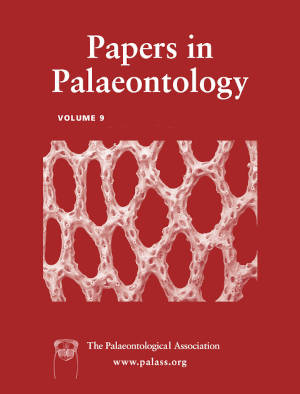Article: Evidence for the evolutionary history and diversity of fossil sweetgums: leaves and associated capitate reproductive structures of Liquidambar from the Eocene of Hainan Island, South China
Publication: Papers in Palaeontology
Volume:
9
Part:
6
Publication Date:
2023
Article number:
e1540
Author(s):
Natalia P. Maslova, Tatiana M. Kodrul, Vasilisa V. Kachkina, Christa-Charlotte Hofmann, Sheng-Lan Xu, Xiao-Yan Liu, and Jian-Hua Jin
DOI:
10.1002/spp2.1540
Abstract
Abstract Extant species of Liquidambar L. exhibit a disjunct distribution between western and eastern Asia and eastern North America to Central America, with the highest species diversity being in China. In this study, two new species of Liquidambar are described from the Eocene of Hainan Island, South China: L. hainanensis on basis of the leaf fossils, and L. ovoidea based on compressions of infructescences. The co-occurrences of L. hainanensis leaves, associated infructescences of L. ovoidea and dispersed pantoporate pollen grains have the combination of morphological features peculiar to the genera Liquidambar and former Semiliquidambar and Altingia. This is considered further palaeobotanical justification for the placement of these three genera into a single genus, Liquidambar, proposed earlier based on molecular markers. Our data provide evidence for the occurrence of an ancestral polymorphic group of Liquidambar species (L. maomingensis with associated capitate infructescences, L. bella, L. hainanensis and L. ovoidea) during the Eocene in South China, and corroborate the view that South China could have been a centre of Liquidambar speciation during the Eocene. The morphological similarity of L. hainanensis leaves to those of the extant species L. orientalis from Western Asia and the North American L. styraciflua may support the importance of both the North Atlantic Land Bridge and the Bering Land Bridge for the dispersal of Liquidambar. Analysis of fossil species of Liquidambar from eastern Asia also contributes to further understanding of patterns in the taxonomic diversity and evolutionary history of this genus.
